Day 5: Wednesday, March 6th
At this point, I had been in Japan for four full days, joined by music writer John Ballon, producer and co-executor of Betty’s estate Damon Smith, and founder/co-owner of Light in the Attic (LITA) Matt Sullivan. Our mission was two-fold: to research the funk-rock pioneer’s 1983 visit to Japan, where she performed in public for the last time at the Crocodile Club with jazz fusion band, Arakawa, and to carry out Betty’s final resting wishes by holding an intimate ceremony at Mount Fuji. In only a few days, we managed to meet bandleader Tatsuhiko Arakawa, musician Itsuro Shimoda, club owner Tetsuya Nishi, composer Shigeru Umebayashi, and hold a truly beautiful ceremony in a snow-covered cherry blossom grove at the foot of the sacred mountain with her dear friend, fashion designer Yuki Torimaru.
There was still one person in Betty’s Japan story that I hadn’t managed to track down yet: Alex Easley, an African American musician living in Japan since the 1970s. It was Easley, a friend of Betty’s brother who grew up with them in their hometown of Homestead, PA, who offered Betty her first point of contact in Japan. Despite extensive messaging across all platforms, we had not successfully connected. But I remained determined and continued trying to reach out during my trip, hoping for an in-person meeting.
…
I began my fifth day as I had the entirety of the trip, listening to my playlist that Betty posthumously helped me create. On this particular morning, I mused on Makoto Yano’s “Yukiguni” from his 1994 collaboration album with Masato Tomobe entitled Kumo no Taxi. While living in Japan, Betty met Makoto Yano while he was playing guitar in a café. She once told me, “he reminded me of James Dean.” Early on in our relationship, Betty desperately wanted me to find that CD for her. When I finally tracked down a copy on Discogs, it was on heavy rotation during our many car rides or afternoon teas together.
Greg Gouty, our translator who also handles international sales for LITA, had other record label business to attend to that day along with Matt. So, Damon, John, and I set out to enjoy our first free day in Tokyo.
All of us were interested in experiencing more of the vinyl listening café culture that’s unique to Tokyo. We had already been to a couple listening cafés that specialized in soul and R&B, so today I suggested something slightly different: Lion Café. Tucked away in the cobblestone streets of the Maruyamacho district, which is home to some of Tokyo’s most popular nightclubs and love hotels, The Lion is a classical music listening cafe that offers a truly singular and captivating experience away from the sensory overload of its surroundings.
I have honestly never been a student or fan of classical music but, after reading about The Lion’s history, I was intent on visiting. Opened in 1923 by architect and audiophile Yamadera Yanosuke, the open, two-story space was meant to offer both a sonic and social refuge from the once thriving red-light district–a high art palette cleanse, so to speak.
Upon entering, the host explained a strict no photography and no talking policy. The Lion is not a place for socializing, unlike the other listening cafés in Tokyo. Rather, the space invites you to turn inward and feel the profound impact of classical music on a custom sound system meant to honor the gravitas of the compositions.
The interior design is a dramatic blend between a church and a theatre, with burgundy velour seats all positioned to face the front of the café that features a ten-foot tall, wooden speaker system built by Yamadera Yanosuke himself. Beneath the base of the speakers lies a massive collection of vinyl records and turntables. I chose a “front row” seat directly in front of the sound system, which felt more and more like a shrine as I sat in silent stillness amongst the rest of the patrons. A waiter left a menu and an ashtray in front of me. I whispered my order and was brought a green tea without so much as a clink from the cup.
When the record that was playing ended, another silent staff member wearing white gloves walked over to the turntable and returned the vinyl back to its rightful place, as an archivist would in a library. He then selected a new record and readied the needle. But, before the music played, he got on a microphone and read the credits from the back of the album cover. Once he finished, he dropped the needle and an album of German opera–that much, at least, I could discern–began playing.
My gaze followed the custom wooden speakers up through the cavernous space where gaudy chandeliers hung from the ceiling. We stayed for the first side of the record and then quietly gathered our belongings as the staff member prepared side B. I can’t imagine there are many other public places in the world that hold such reverence for the lost art of listening. I left feeling deeply grateful to have experienced The Lion.
We stepped out of the hallowed space feeling a little disoriented, as if we just returned from momentarily traveling back in time. We walked a bit and then noticed a sign under a massive, four-story, neon structure that read: Strip Live Theatre. Nothing like a bawdy shock back to the present, we thought! We decided to check it out.
The entrance to Shibuya Dotonbori Theatre was more reminiscent of a hospital gift shop than any strip club we’d ever been to in the states. Bouquets of flowers, tiny balloons, and stuffed animals for purchase filled the brightly lit entryway across from an older lady smoking behind a glass booth. After we purchased our tickets, she pointed to a sign in English that read: no phones, no touching. With our instructions made clear, we entered the performance space.
None of us are regular strip club goers in our respective American cities, but we all had our own experiences that colored our understanding of the age-old artform. However, what we witnessed defied any comparisons to the traditional Western strip shows we’d seen in the past.
The theatre itself was made up of a modest, rectangular stage that connected to a small circular stage protruding into the audience. The seating was intimate, consisting of only five rows in a half-moon formation with minimal standing room behind it. There were no poles, no mirrors, no thumping club music, and no bar serving alcohol–just the performers’ bodies and the ancient art of seduction.
When we entered, the first performer was already on stage wearing a black lace catsuit with cutouts revealing her breasts, butt, and genitals. She presented her body with exquisite command to a fascinating electronic song featuring the didgeridoo. The droning, vibrating intensity of the instrument beautiful paired with the intensity of both her physical skill and the powerful eye contact she made with the silent, captivated audience.
Once she got on the small circular stage, she began to acrobatically contort herself and froze in deeply revealing positions as the stage started to rotate. This gorgeous woman in lace effortlessly shifted positions while teasing the closest audience members by bringing both her most intimate body parts and her black stilettos within an inch of their faces. There was no verbal affirmation, no outward expression of desire or pleasure, and no tipping from the audience. Just radical attentiveness and collective voyeurism.
The entire show consisted of five individual women, each with their own fantasy translated through erotic dance, pantomime, acrobatics, and storytelling. One performer began in a head-to-toe white rabbit costume and ended with only her rabbit ears affixed to her head. Without any props or stage design, she mesmerized the audience with a tale of hallucinogenic discovery, mimicking the act of eating mushrooms from a forest floor that caused an otherworldly, stimulating reaction.
A strip show does not properly describe what we saw. It was nothing less than live, erotic performance art. We walked away from Shibuya Dotonbori Theatre as we had from the Lion Café: wildly inspired by our ability to be turned on by new and unique sensory experiences.
…
I previously made reservations for us to have a traditional omakase dinner at Michelin star restaurant Sushi Gotoku before Damon was scheduled to take a late-night flight back to New York. We approached the sushi counter excitedly, sat down next to five others, and indulged in a luxurious, twenty-course, seasonal, chef-curated meal to celebrate our trio’s final night. Over delicacies like monkfish liver and pufferfish, we reminisced about how we came into each others’ lives and how grateful we were to Betty for bringing us together.
As Damon headed to the airport, John and I made our way back to our hotel to meet up with Matt and Greg who were wrapping up their day of meetings. We joined them at the hotel bar and were introduced to Toko Kobayashi, Endo Ryousuke, and Takeru Matsumoto from Nippon Columbia label, the oldest record label in Japan, founded in 1910. LITA has been working with them for years on many levels, including licensing and distribution of their music in the US.
Over beers, we filled them in on our day of classical music listening, erotic performance art, and exquisite food. As the midnight hour rolled in, I got a notification on my phone, and, to my absolute astonishment, it was from Alex Easley. I gasped at the table as I read his message: “God bless you and thank you so much for honoring Betty. I have no problem meeting with you.” Finally, I had connected with the person Betty told me she originally lived with in Japan! With only a day to spare before I returned to America, we made plans to meet in the afternoon.


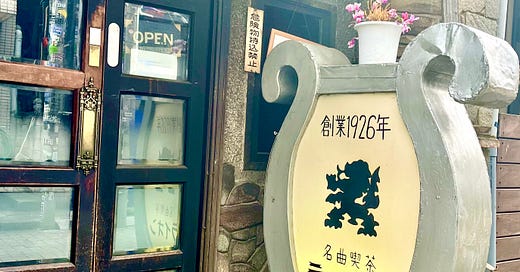




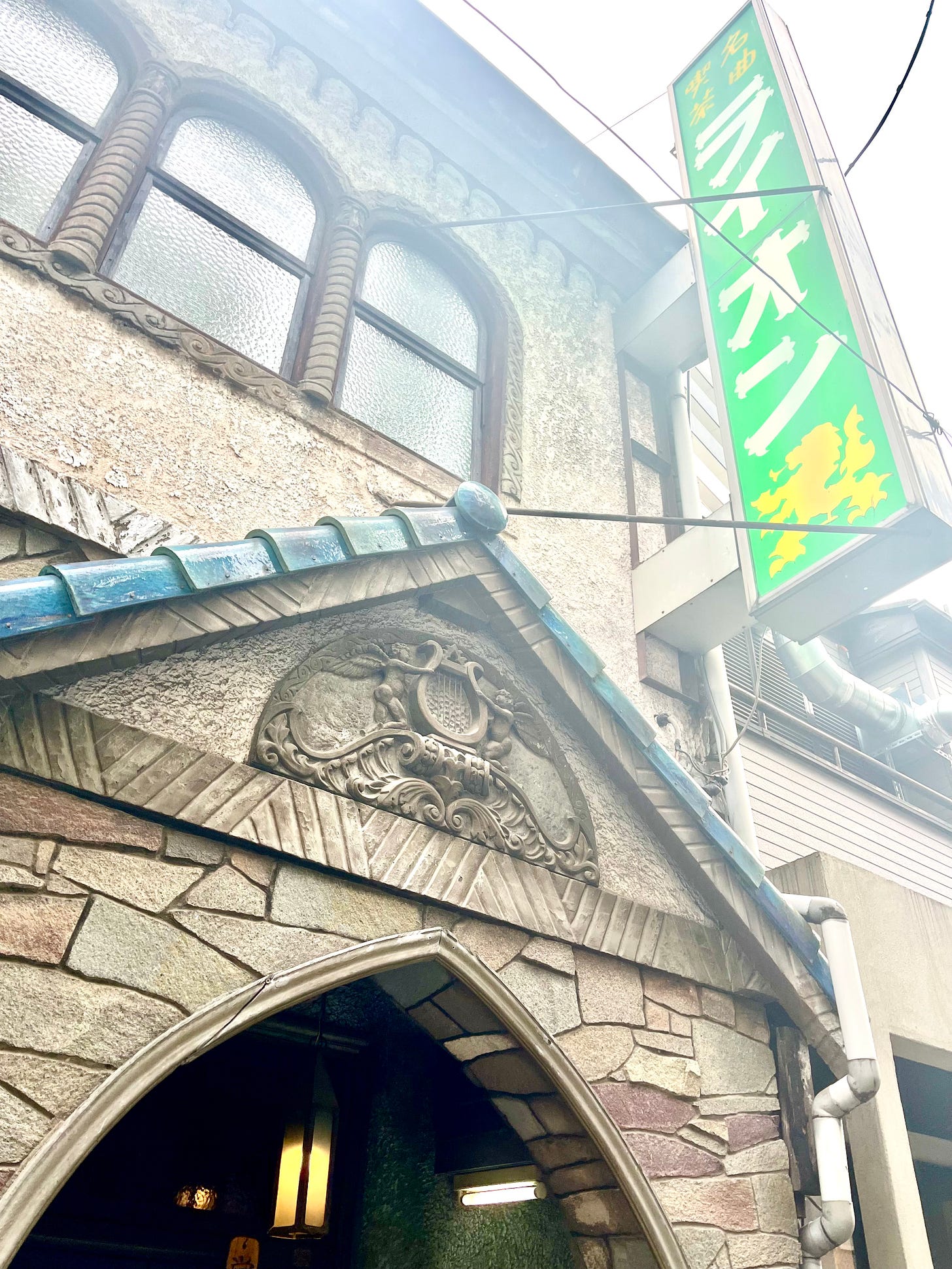
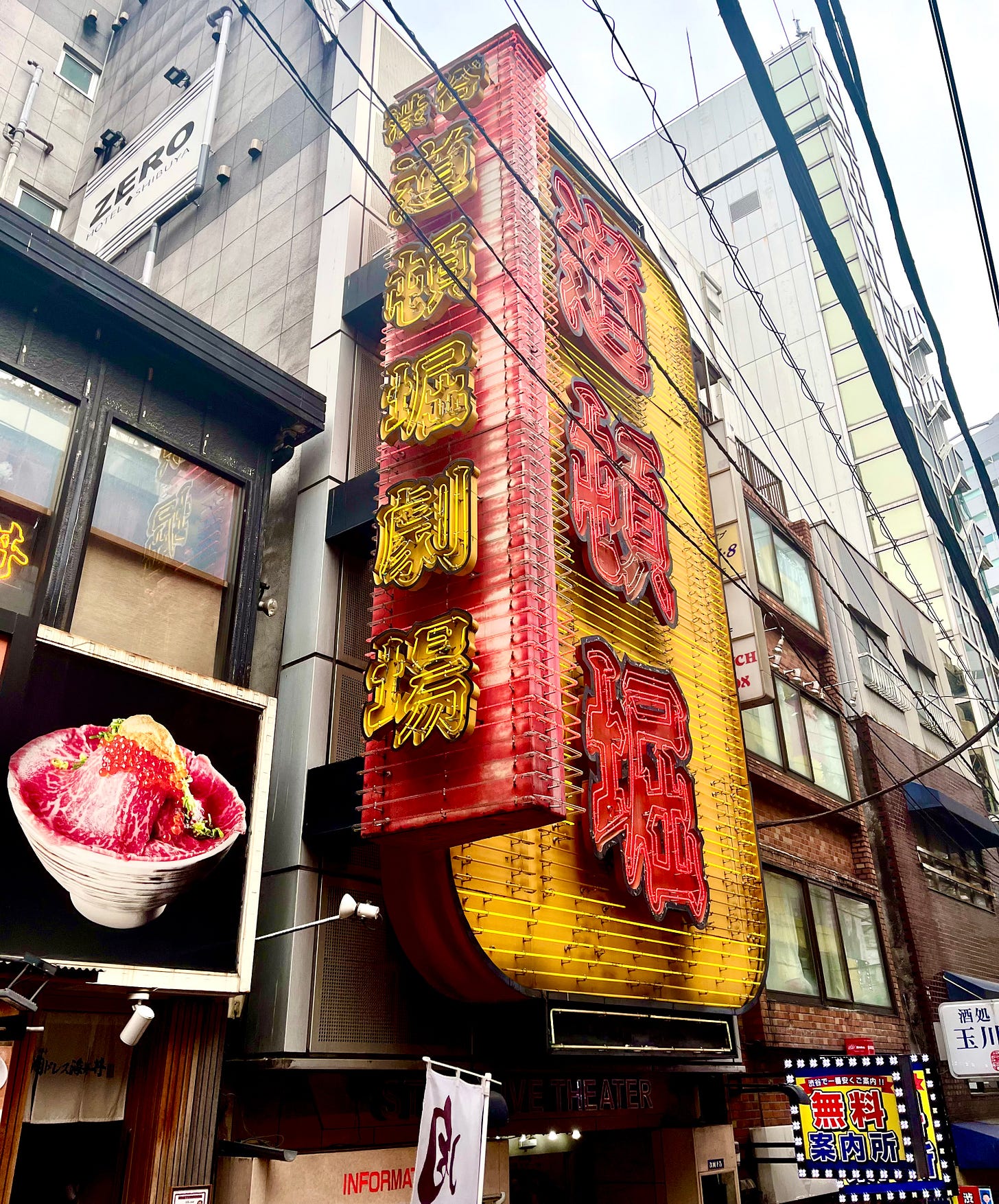
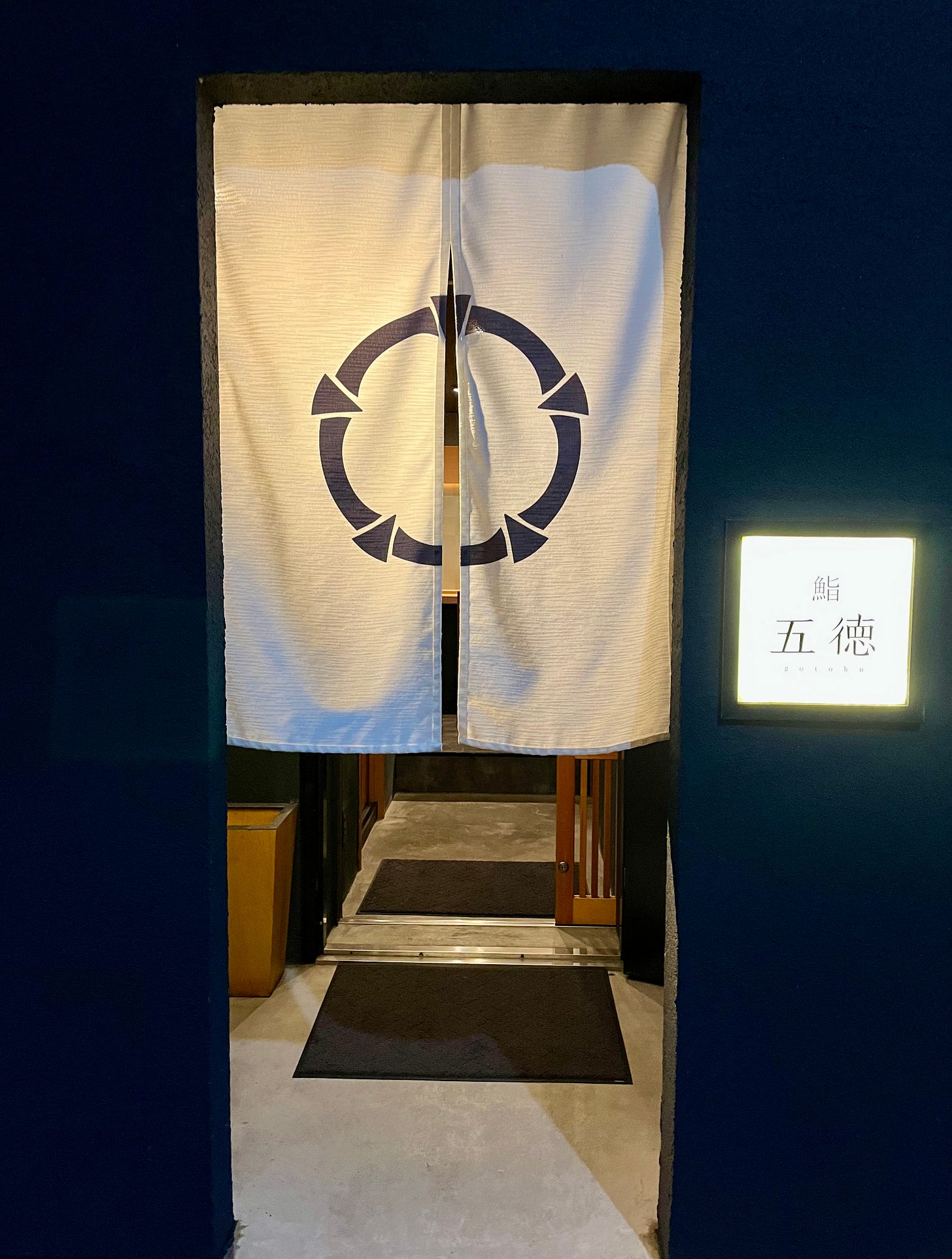
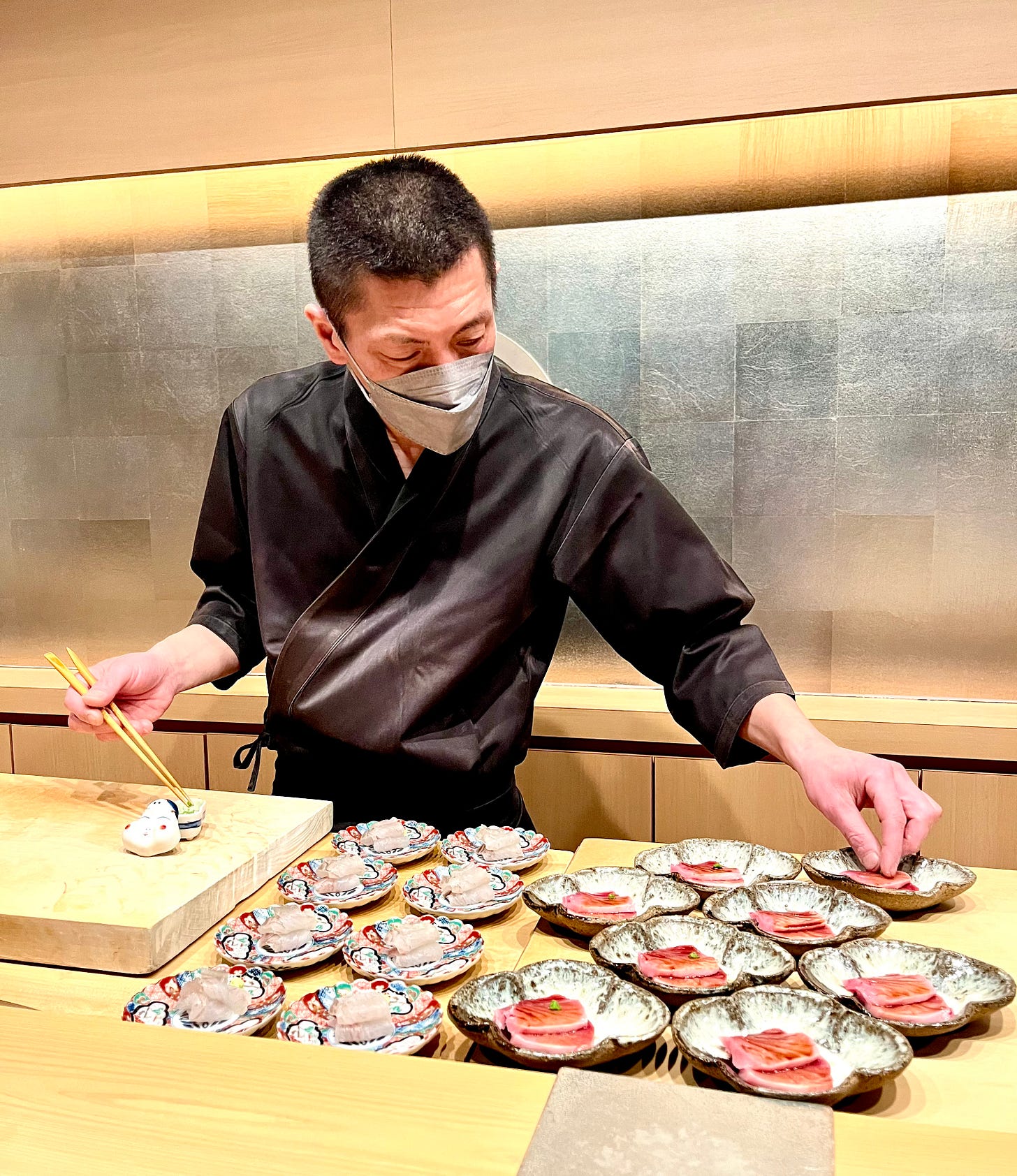
Once again you have given me the gift of painted pictures with your words. I can’t wait until you post again. ❤️